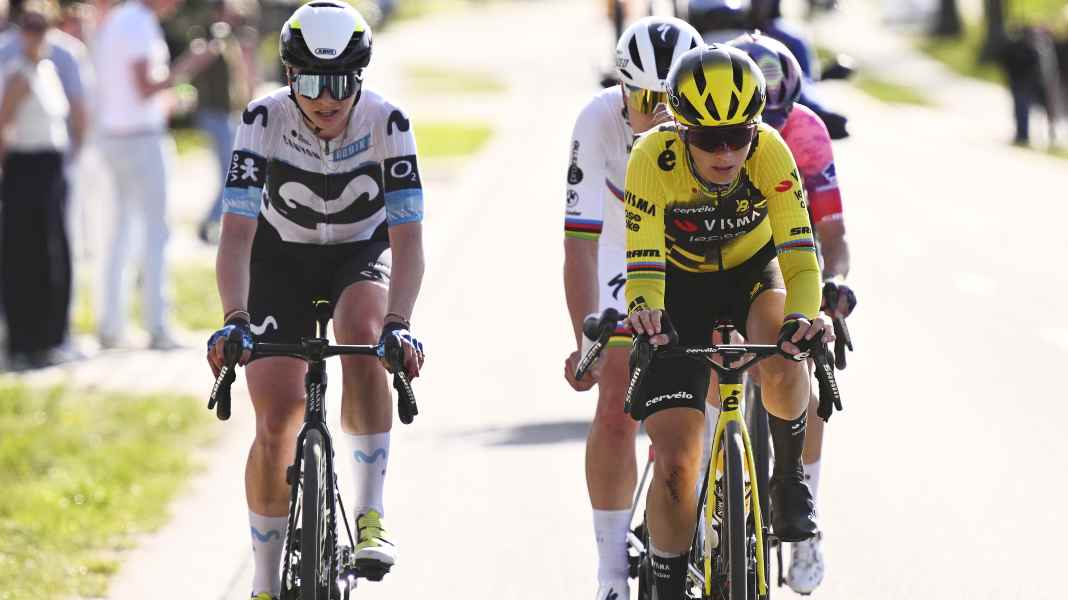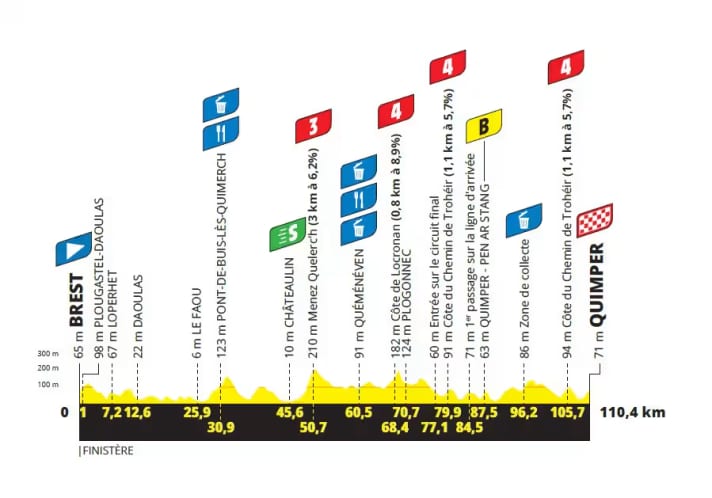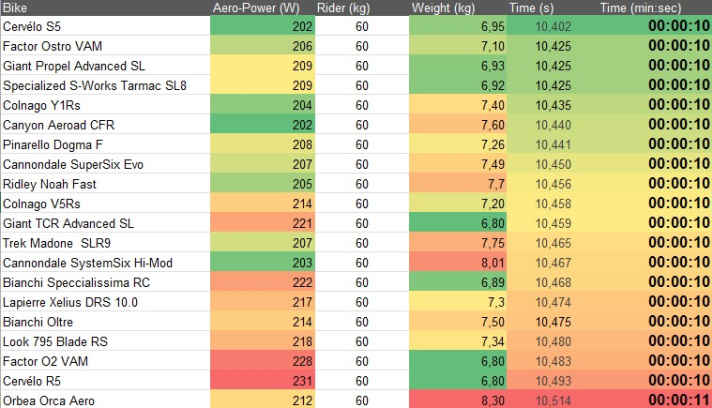
Tour de France Femmes 2025 - Stage 2: Brest - Quimper | 110,4 Kilometers

The second stage is also short and is likely to be similar to day 1 due to its similar structure. Again, there are two final laps to ride, and again there is a short climb in the way, the Côte du Chemin de Trohéir.
There is a 70-meter climb to master at 1,200 meters, 4.7 kilometers before the finish line. On the one hand, that's not much, but the climb starts with a 100-meter section at 14%, followed by 100 meters at 11%. This is where powerful classic riders can make a difference, break away, and carry their lead over the crest.
What does a 14% gradient mean for acceleration? Which bike pushes ahead here? Our simulation provides the answer.
The number of the day: one tenth of a second
Our calculation shows that one kilo of excess weight does not make as much difference when sprinting on a steep section as one might intuitively assume. However, this is also due to the initial conditions: the riders will enter the hill with momentum, which reduces the influence of excess weight.
Over the first hundred meters, the heaviest bike is only a good tenth of a second behind, according to our calculations. Unsurprisingly, the S5 is again in the lead – because it is almost as light as allowed and aerodynamic. It doesn't get any better than this.
An overview of the (almost) complete field

The table shows the ranking after a hundred meters in the steep section. Light and aerodynamic bikes lead the way.
Our expert

Robert Kühnen studied mechanical engineering, writes for TOUR about technology and training topics and develops testing methods. Robert has been refining the simulation calculations for years, they are also used by professional teams.
